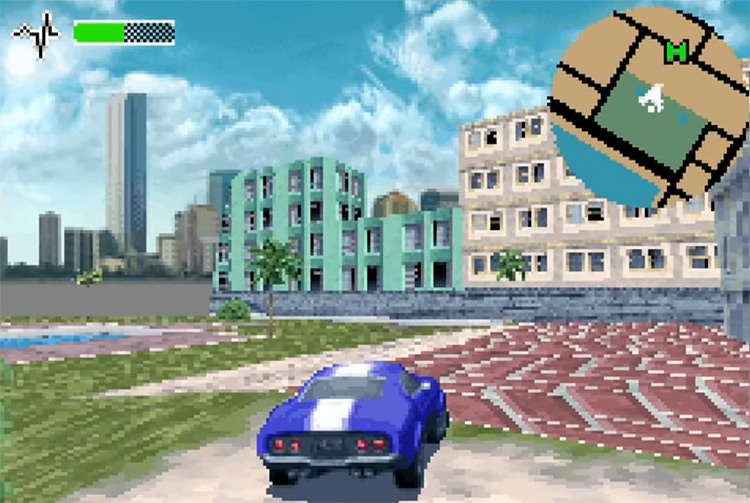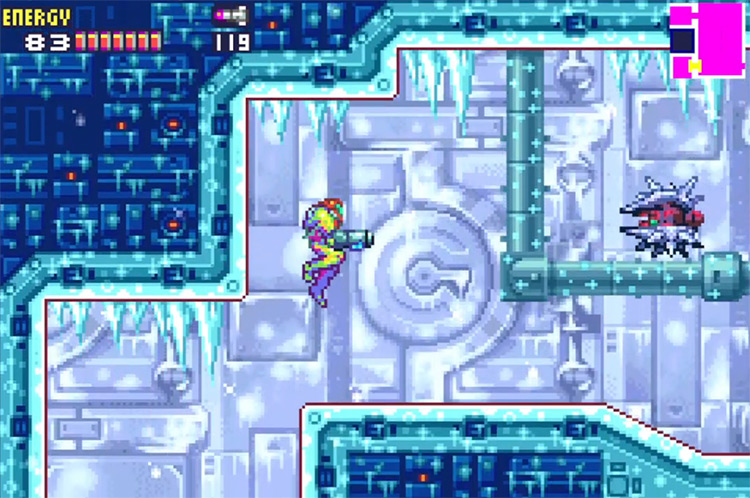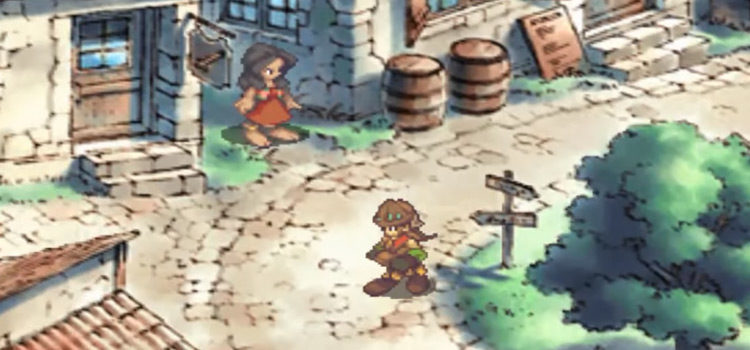Top 10 Best Open World GBA Games, Ranked
This post may contain affiliate links. If you buy something we may get a small commission at no extra cost to you. (Learn more).
Most people believe the age of open-world gaming began in the 2010s with the release of Skyrim and Grand Theft Auto V.
While that might be true of the modern open-world craze, the principles underpinning open-world gaming experiences have been around forever.
You won’t find many 3D open-world high fantasy adventures like Skyrim or The Witcher 3 on the Game Boy Advance. Still, many of its titles feature freedom of exploration and intricately detailed worlds.
Keep your mind open to a broad definition of “open world” as we look at ten GBA games that remind us you don’t need an RTX 3090Ti to immerse players in exploration.
10. Golden Sun: The Lost Age (2003)

Golden Sun: The Lost Age is one of the best classic turn-based RPGs in the GBA’s library.
Along with the original Golden Sun (2001), The Lost Age tells a riveting tale of heroes on a journey to vanquish darkness.
It sounds a bit generic, but it has plenty of twists and quirks that make it memorable – such as making the protagonist for the sequel one of the original’s baddies.
The world of Weyward is vast and intriguing, and the combined campaigns of the original Golden Sun and the sequel give you plenty of time to discover its secrets.
9. Breath of Fire II (2002)

Another turn-based RPG with a massive world to explore on the GBA is this beautiful port of the NES classic Breath of Fire II (1995).
The story follows Ryu Bateson discovering his dragon’s soul and pushing back an invading force of demons. The writing is fantastic, and it’s full of unforgettable characters.
Not only is the world lush and fascinating, full of fleshed-out towns and intriguing points of interest, but you can also leave your mark by developing your own town.
8. MegaMan Zero (2002)

MegaMan Zero doesn’t give you a colossal map with no loading screens, but it gives you the freedom to go anywhere you want in a fully interconnected world.
By the end of the game, you can just walk anywhere on any level without having to replay missions.
The game has three fantastic sequels – all on the GBA – but only this one offers this level of exploration.
7. Castlevania: Aria of Sorrow (2003)

Fans of Castlevania are spoiled for choice on the GBA with titles like Circle of the Moon (2001) and Harmony of Dissonance (2002).
Still, the best has to be Aria of Sorrow.
This game combines the franchise’s staple challenging exploration and tense combat with some exciting RPG elements, similarly to Symphony of the Night (1997) on the PlayStation.
Like always, Dracula’s castle is a maze of bizarre architectural choices with several hidden rooms, trap doors, and loot hidden behind complex puzzles.
This is a great place to start if you’ve never played Castlevania. It’s easier than previous entries, and the focus on exploration will please any open-world fan.
6. Driv3r (2005)

Who needs the PSP port of GTA: San Andreas when you can play Driv3r on the GBA?
Faced with the impossible task of porting Driv3r to the GBA, lesser developers would have made a top-down 2D GTA clone and called it a day – but not Reflections Interactive.
These guys created a “demake” of Driv3r that plays more or less the same as the home console original, complete with a 3D open world – except it’s comically worse in every way.
It’s just like Driv3r, but the graphics are elementary, the gameplay is stripped down to its bare bones, and there are only five car models in the city.
Play this only to marvel at the developer’s ingenuity.
5. Metroid Fusion (2002)

Despite being considered one of the most linear 2D Metroid titles by fans, Samus Aran’s GBA-exclusive adventure still offers an open-ended world with many nooks and crannies to discover.
Most of this “linearity” comes from Metroid Fusion focusing much more on narrative than its predecessors.
The game looks beautiful, and it plays even better. It’s everything you loved about previous Metroid entries, but faster, smoother, and a bit streamlined.
The ambient soundtrack is also fantastic.
4. Metroid: Zero Mission (2004)

If Metroid Fusion feels too linear to quench your thirst for exploration, the old-school map design of Metroid: Zero Mission might be what you’re looking for.
Zero Mission is a remake of the original Metroid (1986) with much-improved graphics but the same maze-like map you can get lost exploring for hours.
Planet Zebes, get ready for the galaxy’s greatest bounty hunter.
The game retains 100% of its non-linearity and adds new areas hiding new items and mini-bosses. Keep an eye out for new paths, even if you’ve played the original.
3. Pokémon Emerald (2005)

We can’t discuss freedom of exploration on the GBA without mentioning the Pokémon series.
Each game in the series takes players to a new region in the world of Pokémon, comprised of roads connecting towns, cities, and other points of interest like cave systems and thick forests.
For Pokémon Emerald’s Hoenn region, Game Freak focused much more on water. Some of the most amazing locations – like Sootopolis City – are accessed using Surf or Dive to explore the game’s coasts and lakes.
The main reason to pick Emerald over Ruby and Sapphire is the Battle Frontier, a whole new area hiding the highest-level trainers to challenge after clearing the Elite IV.
2. The Legend of Zelda: A Link to the Past (2002)

The Legend of Zelda has always been at the forefront of Nintendo’s open-world game development.
The classic overhead-style games offer some of the largest inter-connected worlds of their respective eras, all packed with content and secrets to discover.
A Link to the Past on the GBA is no exception.
It’s a deep and varied world housing some of the best puzzles in the series. Some even require you to enter the dark world, adding even more depth to exploring the overworld.
Strictly speaking, the game is relatively linear – going so far as to number the Dark World dungeons.
Still, you’re free to explore the world and find pieces of heart and other items at any point. This makes the game feel a lot less linear than it really is.
1. The Legend of Zelda: The Minish Cap (2005)

The Minish Cap is one of the most underrated entries in Link’s long history of adventuring.
In addition to level design that competes with A Link to the Past, the game has a wholly revitalized art direction that makes every location more beautiful and lush.
There is a staggering amount of stuff to do around Hyrule and the Minish Village. Shrinking down to the size of the diminutive Minish shifts your perspective and makes Hyrule more exotic.
It’s also one of the few Zelda games where you fight someone other than Ganon, and it features one of the best companions Link has ever had: Ezlo, the magical talking cap.
Do you really need more reasons to grab your GBA (or boot up an emulator) and tackle this 2D Zelda masterpiece?






